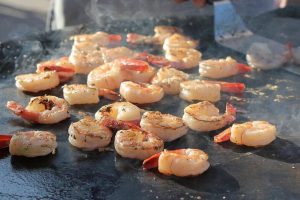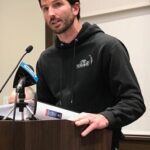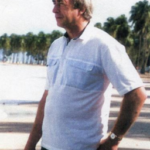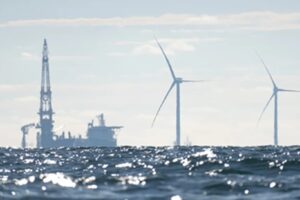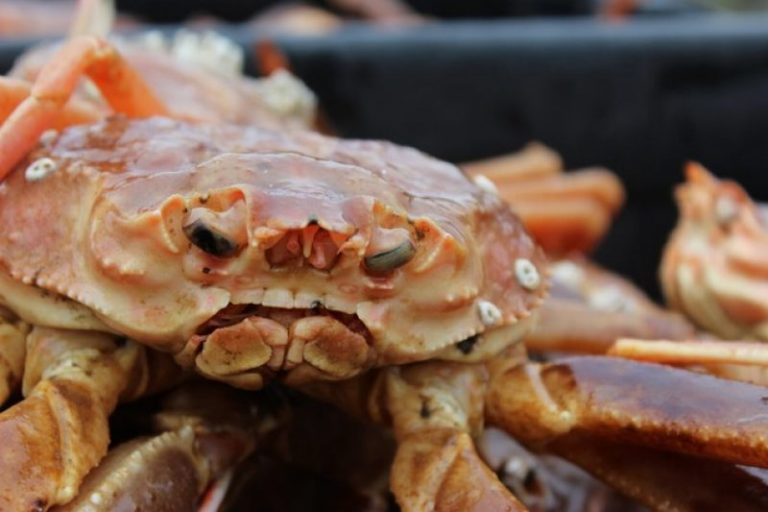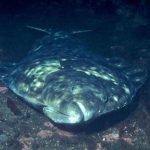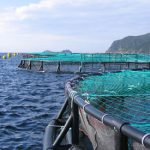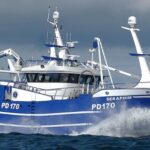Daily Archives: August 26, 2016
Headed home to Gloucester – Coast Guard helps fishermen dewater, make repairs to flooding boat
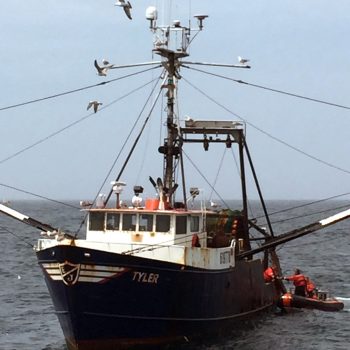 Four people are safely making their way back to port Friday following a multi-asset response to a fishing boat taking on water Friday morning about 60 miles southeast of Vinalhaven, Maine. A person aboard fishing vessel Tyler, homeported in Gloucester, used a VHF radio to contact watchstanders at Coast Guard Sector Northern New England’s command center at about 7:30 a.m. and reported their boat was rapidly taking on water with four people aboard. The hailer reported they were using pumps, but were unable to keep up with the flooding. “It was discovered Tyler’s shaft seal packing box had come off,” said Seaman Amanda Geber, a crewmember aboard Moray. “However, after dewatering the engine space, the crew was able to make repairs. After sea trials, it was determined Tyler could make it safely back to port on her own power. It was fortunate this case was concluded without loss of crew, vessel, or catch.” Link 17:59
Four people are safely making their way back to port Friday following a multi-asset response to a fishing boat taking on water Friday morning about 60 miles southeast of Vinalhaven, Maine. A person aboard fishing vessel Tyler, homeported in Gloucester, used a VHF radio to contact watchstanders at Coast Guard Sector Northern New England’s command center at about 7:30 a.m. and reported their boat was rapidly taking on water with four people aboard. The hailer reported they were using pumps, but were unable to keep up with the flooding. “It was discovered Tyler’s shaft seal packing box had come off,” said Seaman Amanda Geber, a crewmember aboard Moray. “However, after dewatering the engine space, the crew was able to make repairs. After sea trials, it was determined Tyler could make it safely back to port on her own power. It was fortunate this case was concluded without loss of crew, vessel, or catch.” Link 17:59
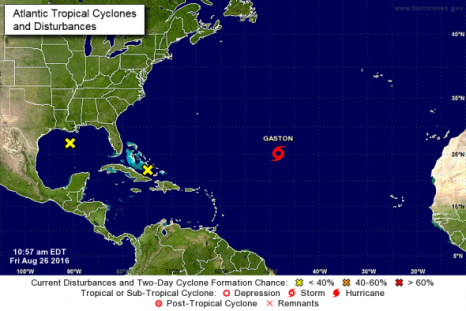
The 2016 Atlantic Hurricane Season So Far. Keep an eye on Hermine.
A quick note about the current Atlantic hurricane season. With resect to just the US, we’ve had a fairly low level season, and it is easy to become complacent about this time, but in fact, the risks from Atlantic hurricanes rise about this time of year, so pay attention. Watch for Hermine. More on that below. Gaston is the currently active named storm. It is likely to form into a hurricane over the weekend, veer right before coming too close to Bermuda, and remain pretty far out in the Atlantic. There are no clear predictions of what it will do by mid week, but it is likely to weaken a bit on Wednesday. Gaston will be in hurricane-hostile territory at that time, so may be it will just go away. Hermine is the name that would be given to what is now a tropical disturbance, should it form a tropical storm. Read the story here 17:17
Nils Stolpe: Marine Monuments – Don’t let your piece of the ocean be next!
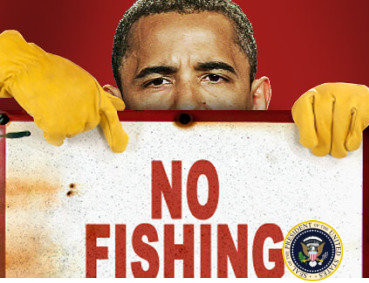 In an effort coordinated by the National Coalition for Fishing Communities (NCFC), thirty four domestic fishing industry trade groups have signed on to a letter to President Obama opposing a strong push by environmental groups and the billion dollar foundations that support them to create marine sanctuaries on both coasts during his last days in office. I don’t need to tell you how much industry effort has been expended over the last several decades to make fishery management under the Magnuson-Stevens Fishery Conservation and Management Act an effective and transparent science-based process. Anyone with an interest in our domestic fisheries, whether on the water, in a shore-based fishing-dependent business or in any way associated with fishing should be committed to improving this process, and President Obama is being urged to circumvent it to bolster his “environmental legacy.” Yesterday the White House announced that the President will be expanding the Papahānaumokuākea Marine National Monument off Hawaii, which was originally created by President Bush in 2006. This will be a no-fishing zone of over half a million square miles. Needless to say, it’s a big hit with the enviros, but it was done without any public process.
In an effort coordinated by the National Coalition for Fishing Communities (NCFC), thirty four domestic fishing industry trade groups have signed on to a letter to President Obama opposing a strong push by environmental groups and the billion dollar foundations that support them to create marine sanctuaries on both coasts during his last days in office. I don’t need to tell you how much industry effort has been expended over the last several decades to make fishery management under the Magnuson-Stevens Fishery Conservation and Management Act an effective and transparent science-based process. Anyone with an interest in our domestic fisheries, whether on the water, in a shore-based fishing-dependent business or in any way associated with fishing should be committed to improving this process, and President Obama is being urged to circumvent it to bolster his “environmental legacy.” Yesterday the White House announced that the President will be expanding the Papahānaumokuākea Marine National Monument off Hawaii, which was originally created by President Bush in 2006. This will be a no-fishing zone of over half a million square miles. Needless to say, it’s a big hit with the enviros, but it was done without any public process.
The letter, with a list of the fishing organizations that are on board so far, is at a web portal set up by the NCFC > Click Here <. Even if you are a member of one of those organizations, please take the few minutes required to personally sign. If you are in a fishing organization that hasn’t, please encourage the leadership to do so. And please encourage as many other folks as possible. The time for top-down governmental dictates was over years ago. We have a system that is starting to work both for the fishermen and the fish and we can’t let it be short circuited. There’s too much at risk.
Cape Cod Fishermen Seek Buffer From Mid Water Trawlers
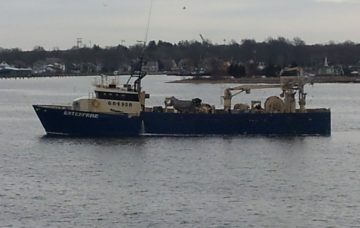 On Aug. 17, the Herring Oversight Committee of the New England Fisheries Management Council voted to send the council two options for establishing a buffer zone prohibiting mid-water trawling off Cape Cod. The zone would extend either 12 miles or 35 miles from shore — significantly farther than the 6-mile zone proposed by the herring industry and closer than the 50-mile mark sought by environmental groups. The council will consider the options when it meets in September. Fishermen have been complaining for years about the industrial-sized ships landing on the back side of Cape Cod, scooping up millions of pounds of herring and leaving, they say, a temporary ocean “bio-desert” in their wake. In 2015, the Cape Cod Commercial Fishermen’s Alliance collected hundreds of comments and individual letters from fisherman about the phenomenon called “localized depletion” — defined as “when harvesting takes more fish than can be replaced locally or through fish migrating into the catch area within a given time period.” Read the story here 16:22
On Aug. 17, the Herring Oversight Committee of the New England Fisheries Management Council voted to send the council two options for establishing a buffer zone prohibiting mid-water trawling off Cape Cod. The zone would extend either 12 miles or 35 miles from shore — significantly farther than the 6-mile zone proposed by the herring industry and closer than the 50-mile mark sought by environmental groups. The council will consider the options when it meets in September. Fishermen have been complaining for years about the industrial-sized ships landing on the back side of Cape Cod, scooping up millions of pounds of herring and leaving, they say, a temporary ocean “bio-desert” in their wake. In 2015, the Cape Cod Commercial Fishermen’s Alliance collected hundreds of comments and individual letters from fisherman about the phenomenon called “localized depletion” — defined as “when harvesting takes more fish than can be replaced locally or through fish migrating into the catch area within a given time period.” Read the story here 16:22
Whale Protection & Crab Gear Retrieval Act, SB 1287, heads to Governor Browns desk
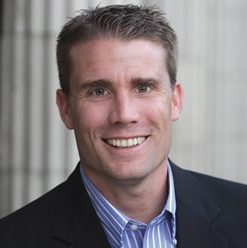 North Coast Senator Mike McGuire’s legislation that will help permanently protect whales by removing lost and abandoned crab fishing gear from the ocean has been approved by both houses of the State Legislature and will now head to Governor Brown’s desk. SB 1287 received widespread and overwhelming support in the Senate and was approved Thursday by a vote of the full State Assembly. “We need this legislation, now more than ever. Whale entanglement numbers are skyrocketing off the California coast and we’re bringing together crabbers and environmentalists to get this common sense bill signed into law,” Senator Mike McGuire said. The Whale Protection & Crab Gear Retrieval Act, which was proactively initiated by the thousands of hard working men and women who make up California’s mighty crab fleet, would create a regulatory program with incentives for fishermen to retrieve Dungeness crab fishing gear that would otherwise be lost in the ocean. It’s estimated that thousands of pots are lost every season and these pieces of gear could have hundreds of feet of rope attached to a locater buoy. Read the rest here 16:04
North Coast Senator Mike McGuire’s legislation that will help permanently protect whales by removing lost and abandoned crab fishing gear from the ocean has been approved by both houses of the State Legislature and will now head to Governor Brown’s desk. SB 1287 received widespread and overwhelming support in the Senate and was approved Thursday by a vote of the full State Assembly. “We need this legislation, now more than ever. Whale entanglement numbers are skyrocketing off the California coast and we’re bringing together crabbers and environmentalists to get this common sense bill signed into law,” Senator Mike McGuire said. The Whale Protection & Crab Gear Retrieval Act, which was proactively initiated by the thousands of hard working men and women who make up California’s mighty crab fleet, would create a regulatory program with incentives for fishermen to retrieve Dungeness crab fishing gear that would otherwise be lost in the ocean. It’s estimated that thousands of pots are lost every season and these pieces of gear could have hundreds of feet of rope attached to a locater buoy. Read the rest here 16:04
Exterminated Alberta commercial fishermen sue province for $15 million over 2014 decision to end industry
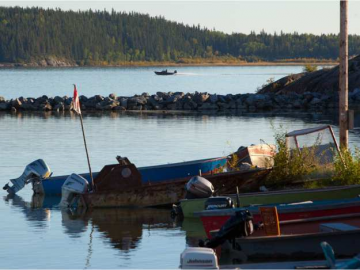 A group of former Alberta commercial fishermen are suing the province for $15 million over its 2014 decision to end the industry and no longer issue commercial fishing licences. Two statements of claim filed July 28 in Edmonton’s Court of Queen’s Bench allege the Alberta minister of environment and sustainable resource development was negligent for cancelling commercial fishing licences without adequate reasons and failing to give adequate warning of the impending cancellations. The statements of claim also allege the ministry failed to “act in a responsible manner,” breached its duty to continue to issue commercial fishing licences to the plaintiffs and failed to implement a program to compensate commercial fishermen for the loss of their licences and their businesses. Read the story here 14:25
A group of former Alberta commercial fishermen are suing the province for $15 million over its 2014 decision to end the industry and no longer issue commercial fishing licences. Two statements of claim filed July 28 in Edmonton’s Court of Queen’s Bench allege the Alberta minister of environment and sustainable resource development was negligent for cancelling commercial fishing licences without adequate reasons and failing to give adequate warning of the impending cancellations. The statements of claim also allege the ministry failed to “act in a responsible manner,” breached its duty to continue to issue commercial fishing licences to the plaintiffs and failed to implement a program to compensate commercial fishermen for the loss of their licences and their businesses. Read the story here 14:25
Massachusetts man pleads guilty to making hoax distress calls to Coast Guard
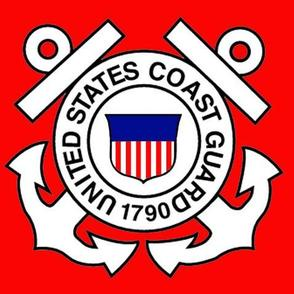 A Massachusetts man has pleaded guilty to making hoax radio distress calls to the Coast Guard that prompted fruitless searches that wasted time and resources. Prosecutors say 47-year-old Roger Martin, of Fairhaven, made three calls to the Coast Guard in April and May 2015 claiming that he was on a boat on Cape Cod Canal that was sinking. In each case he provided another man’s name, address, and on one occasion, even birth date, that he had obtained improperly from a law enforcement database while working as a dispatcher for the Bristol County Sheriff’s Office. Martin pleaded guilty this week in federal court to three counts of sending false distress messages and one count of identity fraud. Sentencing is scheduled for Nov. 22. link 14:03
A Massachusetts man has pleaded guilty to making hoax radio distress calls to the Coast Guard that prompted fruitless searches that wasted time and resources. Prosecutors say 47-year-old Roger Martin, of Fairhaven, made three calls to the Coast Guard in April and May 2015 claiming that he was on a boat on Cape Cod Canal that was sinking. In each case he provided another man’s name, address, and on one occasion, even birth date, that he had obtained improperly from a law enforcement database while working as a dispatcher for the Bristol County Sheriff’s Office. Martin pleaded guilty this week in federal court to three counts of sending false distress messages and one count of identity fraud. Sentencing is scheduled for Nov. 22. link 14:03
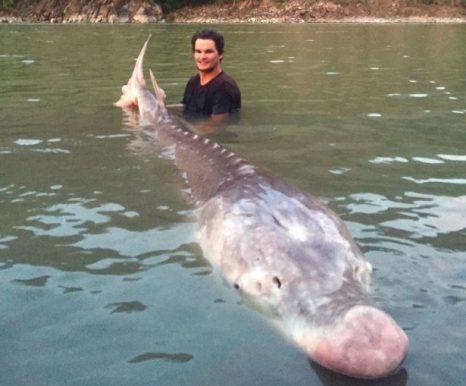
The Legendary Pig Nose the Sturgeon has been caught!
A young fishing guide based in Lillooet is enjoying some extra attention after he and some friends reeled in a huge white sturgeon known as Pig Nose this week. It happened late on Tuesday on the Fraser River near Lillooet after a long day without much to show for it. “The last hole of the day there, we pulled in and it happened right away,” he said. “The fish jumped right out of the river and I said, ‘Well, that looks like a 10-footer, so strap on, we’re going to be into at least a two-hour fight.’ And it ended up being two hours, two hours and 15 minutes.” Read the story here 12:15
NOAA Office of General Counsel, OLE Enforcement Actions January 1, 2016, through June 30, 20161
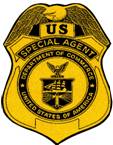 During this reporting period, NOAA charged 45 civil administrative cases, as follows:3 ALASKA 1. AK1201773; F/V Susan ‐ Owner and operator were charged under the Endangered Species Act (ESA) for allowing the vessel to approach within 3 nautical miles of the Stellar sea lion rookery site located off of Marmot Island. NORTHEAST 15. NE1401038; F/V Janaya & Joseph ‐ Owner and operator were charged under the Magnuson‐Stevens Act for negligently and without authorization removing lobster traps owned by another person located in the EEZ. A $2,000 NOVA was issued. 16. NE1403707; F/V Paulo Marc ‐ Individual was charged NORTHWEST 27. NW1200668B; F/V Ceres ‐ Operator was charged under the Magnuson‐Stevens Act for taking, retaining, possessing, or landing more than a single cumulative limit of a particular species ‐‐ sablefish ‐‐ and so on. Read the rest here 11:41
During this reporting period, NOAA charged 45 civil administrative cases, as follows:3 ALASKA 1. AK1201773; F/V Susan ‐ Owner and operator were charged under the Endangered Species Act (ESA) for allowing the vessel to approach within 3 nautical miles of the Stellar sea lion rookery site located off of Marmot Island. NORTHEAST 15. NE1401038; F/V Janaya & Joseph ‐ Owner and operator were charged under the Magnuson‐Stevens Act for negligently and without authorization removing lobster traps owned by another person located in the EEZ. A $2,000 NOVA was issued. 16. NE1403707; F/V Paulo Marc ‐ Individual was charged NORTHWEST 27. NW1200668B; F/V Ceres ‐ Operator was charged under the Magnuson‐Stevens Act for taking, retaining, possessing, or landing more than a single cumulative limit of a particular species ‐‐ sablefish ‐‐ and so on. Read the rest here 11:41
High expectation, a season of disappointment – Upper Cook Inlet commercial fishing winds down
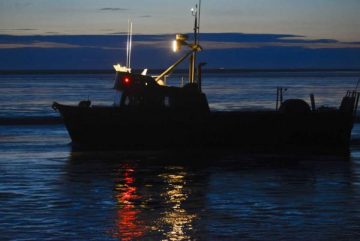 The boom of fish the commercial operations in Upper Cook Inlet expected never arrived this year. High preseason expectations made the 2016 season a disappointment for many commercial fishermen. The Alaska Department of Fish and Game originally projected about 7.1 million sockeye salmon to return to the Upper Cook Inlet streams, but by Wednesday, only 5.2 million had. The harvest of approximately 3,023,462 million fish wasn’t the lowest in the last decade — 2009 and 2006 both had lower harvests, with approximately 2.5 million and 2.9 million fish harvested, respectively. Altogether, the commercial fishery has harvested 2,382,167 sockeye salmon and 379,064 pinks, the two most populous species commercial fishermen harvest, as of Aug. 22. They also caught 127,971 coho, 124,648 chum and 9,612 king salmon, according to Fish and Game data. Read the story here 10:53
The boom of fish the commercial operations in Upper Cook Inlet expected never arrived this year. High preseason expectations made the 2016 season a disappointment for many commercial fishermen. The Alaska Department of Fish and Game originally projected about 7.1 million sockeye salmon to return to the Upper Cook Inlet streams, but by Wednesday, only 5.2 million had. The harvest of approximately 3,023,462 million fish wasn’t the lowest in the last decade — 2009 and 2006 both had lower harvests, with approximately 2.5 million and 2.9 million fish harvested, respectively. Altogether, the commercial fishery has harvested 2,382,167 sockeye salmon and 379,064 pinks, the two most populous species commercial fishermen harvest, as of Aug. 22. They also caught 127,971 coho, 124,648 chum and 9,612 king salmon, according to Fish and Game data. Read the story here 10:53
Lobstermen in Maine’s historically open Zone C vote to close their waters to newcomers
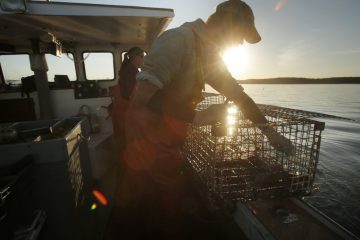 The lobstermen of Stonington and Vinalhaven, the busiest lobster ports in Maine, have voted to close their waters to additional fishermen, preferring that newcomers wait for others to leave before dropping traps there. Almost three of every four local lobstermen who voted in a referendum this summer supported the adoption of a waiting list system. The majority included many of the small island communities that had previously opposed making newcomers wait for lobster licenses out of fear that it would discourage people from moving to their far-flung communities. Of the nine districts within the regional lobster zone, only one, the district that includes Matinicus and Criehaven, voted against making newcomers go on a waiting list. Results show that local lobstermen of all ages, license types and business size support the closure. Read the story here 09:34
The lobstermen of Stonington and Vinalhaven, the busiest lobster ports in Maine, have voted to close their waters to additional fishermen, preferring that newcomers wait for others to leave before dropping traps there. Almost three of every four local lobstermen who voted in a referendum this summer supported the adoption of a waiting list system. The majority included many of the small island communities that had previously opposed making newcomers wait for lobster licenses out of fear that it would discourage people from moving to their far-flung communities. Of the nine districts within the regional lobster zone, only one, the district that includes Matinicus and Criehaven, voted against making newcomers go on a waiting list. Results show that local lobstermen of all ages, license types and business size support the closure. Read the story here 09:34
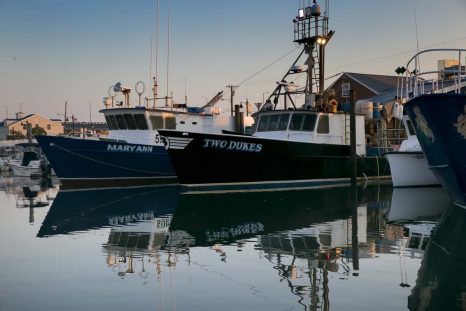
Lobster, from the Jersey coast to your dinner plate
It had been a long four days at sea aboard the Two Dukes, harvesting thousands of pounds of American lobster and a sideline catch of Jonah crab about 80 miles from the New Jersey coast in an area called the Hudson Canyon. Out where the water is deeper than a skyscraper is tall, the work days are 14 hours long and start at 5 a.m. There’s really no break aboard the 70-foot steel-hulled lobster boat until a crew member “cooks a nice dinner” – usually not lobster or crab – and then it’s finally time to find a bunk and grab some sleep until the next shift. The weather is an ever-present, relentless partner in the enterprise and, on any given voyage, can range from sunbaked heat to cold, howling winds and monstrous, stormy swells. No one wastes time talking about good weather. Read the story here 08:41
Anti Fishing Obama Expands Papahanaumokuakea Marine National Monument
 Obama on Friday will expand a marine national monument off the Northwest Hawaiian Islands to make it the world’s largest marine protected area, encompassing nearly 600,000 square miles and thousands of species of sea life, including endangered sea turtles, whales and black coral beds. The action will make it illegal to conduct any commercial fishing and any type of mineral extraction in the expanded Papahanaumokuakea Marine National Monument, the original 140,000 square miles of which was first protected by President George W. Bush in 2006 and designated a World Heritage Site by the United Nations Education, Scientific and Cultural Organization in 2010. Obama will travel to Hawaii next week to commemorate the new monument with a trip to Midway Atoll, located within the newly protected area, to highlight “how the threat of climate change makes protecting our public lands and waters more important than ever,” the White House said. Read the rest here 03:54
Obama on Friday will expand a marine national monument off the Northwest Hawaiian Islands to make it the world’s largest marine protected area, encompassing nearly 600,000 square miles and thousands of species of sea life, including endangered sea turtles, whales and black coral beds. The action will make it illegal to conduct any commercial fishing and any type of mineral extraction in the expanded Papahanaumokuakea Marine National Monument, the original 140,000 square miles of which was first protected by President George W. Bush in 2006 and designated a World Heritage Site by the United Nations Education, Scientific and Cultural Organization in 2010. Obama will travel to Hawaii next week to commemorate the new monument with a trip to Midway Atoll, located within the newly protected area, to highlight “how the threat of climate change makes protecting our public lands and waters more important than ever,” the White House said. Read the rest here 03:54

































